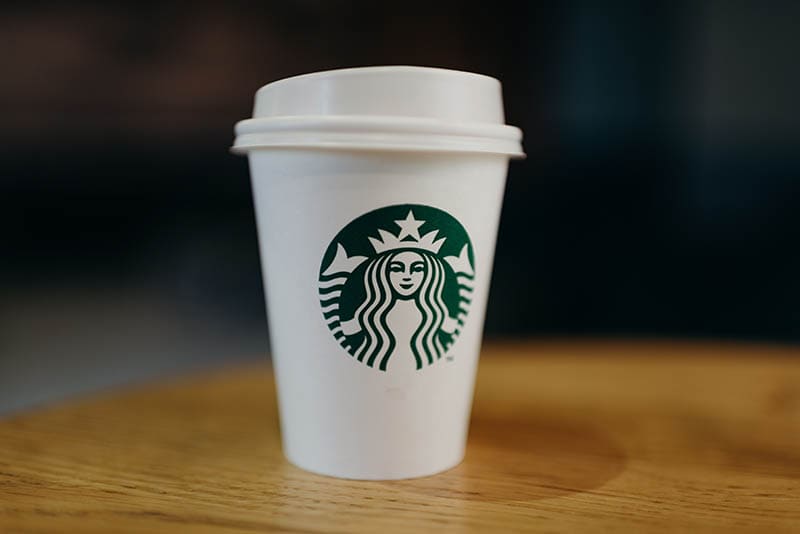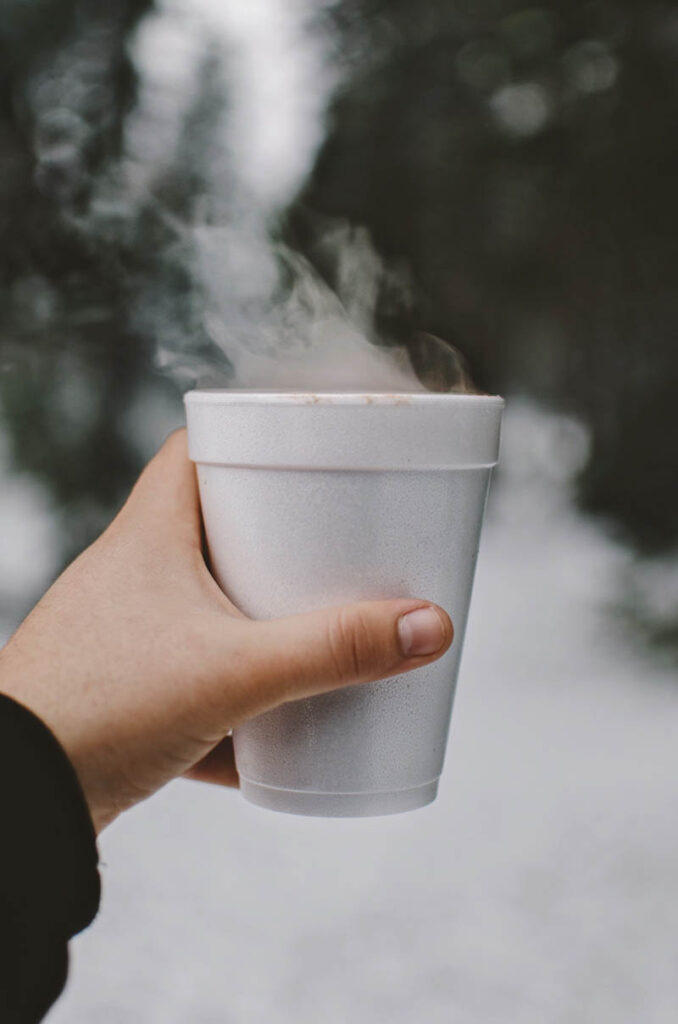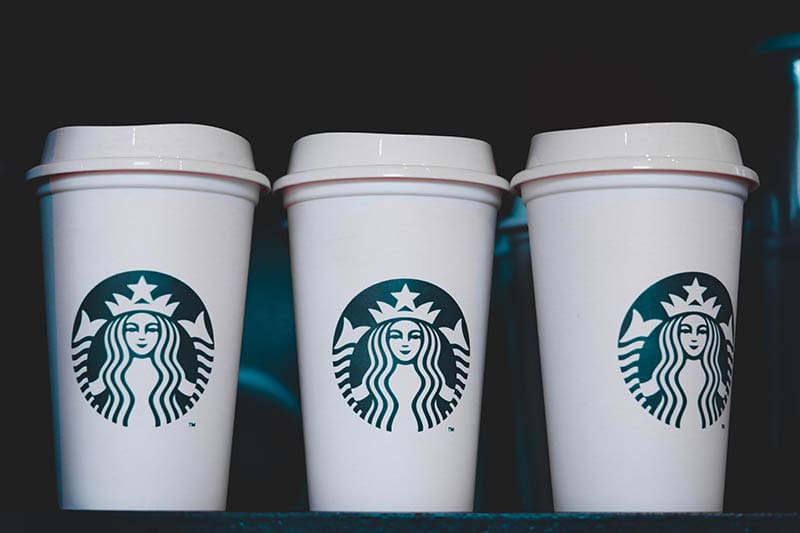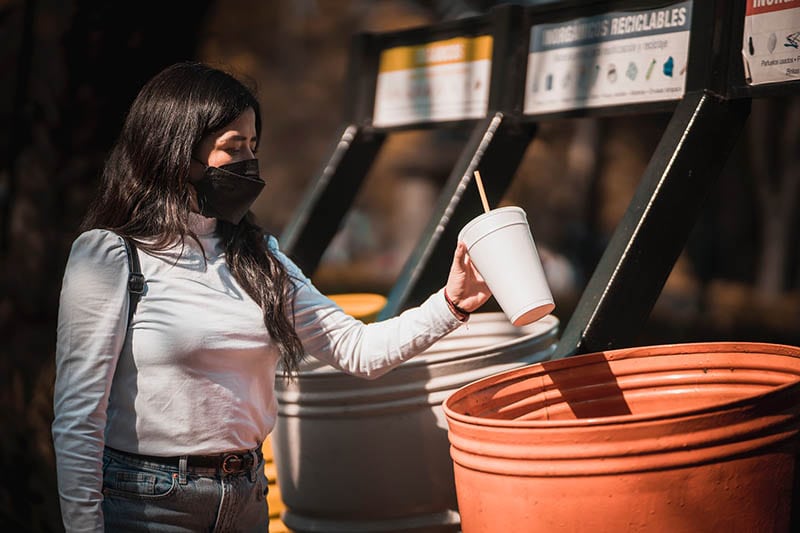Are Starbucks Cups Recyclable? How Do You Properly Dispose of Them?
-
Jeff Weishaupt
- Last updated:

Since 2015, Starbucks has made noteworthy efforts to get rid of plastic straws by introducing its straw-free cold cup lids. However, the same cannot be said about their cups.
The company’s CEO has described their cups as “one of the most nagging issues” they’ve dealt with. Despite endless efforts to find compostable alternatives, Starbucks has yet to find a fully recyclable cup.
Currently, their cups aren’t recyclable, and disposing of them can be pretty tricky. Here’s everything there is to know about the environmental status of Starbucks cups.
Are Starbucks Cups Recyclable?
While Starbucks cups may feel like paper, that’s not their true nature. Their cups have a paper exterior made from 10% recycled materials. However, it features a plastic lining inside.
When the thin polyethylene coating ensures no liquid leaks from the cup, it also prevents you from recycling these cups. Unfortunately, most Starbucks cups end up in landfills one way or another. There, the plastic lining biodegrades into microplastics. These microplastics may reenter the human food chain or harm marine life in the long run.
Other components of the classic Starbucks include the plastic lid, which is more recyclable than the previous model. In addition, it also includes a cardboard sleeve.
Starbucks’ Compostable Paper Cups

In March 2018, the international chain offered $10 million to anyone who could offer the perfect compostable design. In 2020, they finally landed on the most sustainable model they’ve ever put out.
In March 2020, they released a BioPBS-lined cup, which replaces the plastic lining with a compostable lining. That eliminates the problem of removing the plastic lining before recycling. However, this cup is only available in select locations, such as London, New York, etc.
The company partnered with Closed Loop Partners to launch the NextGen Cup Challenge. They also founded a consortium, which opened applications for the next best compostable cup. Out of 12 winning teams, it’s unclear who came up with the BioPBS-lined cup.
The somewhat discreet release of this cup demolishes the entire purpose behind its invention. Nevertheless, Starbucks hoped to and succeeded at making this cup resemble their previous designs as much as possible.
As a result, most customers have yet to learn that the cup is compostable and continue to dispose of their used cups unethically.
History of Starbucks Cups and Their Recyclability
Putting an end to plastic straws in 2015 wasn’t the first time Starbucks contributed to a better future for the planet.
1900s
Their journey toward complete recyclability began in 1985, only 14 years after its establishment. This year, they introduced their first reusables incentive. The company offered a 10-cent discount to customers who would bring their own cups, an incentive that is still applicable today.
In 1996, Starbucks began a relationship with the nonprofit organization Environmental Defense Fund. The nonprofit helped them find ways to eliminate the environmental impact of the classic Starbucks cup.
The following year, Starbucks put an end to double-cupping, a wasteful method used to maintain the insulation of the drink. Instead, they replaced the second cup with a cardboard sleeve, making it easiest for baristas and customers to hold hot drinks.
2000s

In 2006, Starbucks won approval from the FDA to introduce the first hot beverage paper cup in the retail industry. The cup contains 10% of post-consumer recycled fiber (PCF). By the next 2 years, the company had already set high standards for its future.
The company pledged to serve 15% of all beverage reusable cups by 2015—a goal they were unable to reach. They also couldn’t reach their goal of making 100% of their cups reusable or recyclable.
The same year, they introduced another new cup, a polypropylene plastic model using 15% less plastic than their older models. According to Starbucks, the production of these cups emits 45% less greenhouse gas.
2010s
In 2010, Starbucks announced its alliance with the Foodservice Packaging Institute.
In 2012, Starbucks introduced its new and improved cardboard cup sleeves. These were made from recycled content and saved nearly 100,000 trees annually. However, their incentives to reduce the environmental impact of cups didn’t end there.
By 2013, all Starbucks stores in the US and Canada offered $1 reusable cups, while the United Kingdom offered £1 reusable cups. They also increased the recycled content in their cup sleeves to 85% in 2015.
While they still need to reach their previously set goals, Starbucks aimed higher in 2016. They pledged to double their cups’ recyclability, reusability, and recycled content by 2022.
2020s

In 2021, Starbucks recycled 450,000 cups across the Middle East, Europe, and Africa with the help of its Circular Cup program. Additionally, South Korean outlets have committed to altogether discontinuing disposable cups by 2025.
This year, the company is testing returnable cups in the Middle East, Africa, and Europe. They also introduced a borrow-and-return program in Singapore.
Overall, Starbucks hopes to shift away from single-use plastic products and keep high standards for its future.
How to Properly Dispose of Starbucks Cups

Currently, the only correct way to dispose of Starbucks cups is to throw them in the recycling bins in the store. This tactic only works for customers who finish their drinks in-store. Still, it’s unlikely that most customers will follow this method.
Customers may receive the proper education and incentives from Starbucks to throw their cups in the correct bins. Even then, the employees would have to sift through the recycling bins. They’ll need to separate non-recyclable items and remove the plastic lining from the recyclable ones.
As we mentioned, the plastic lining biodegrades to become microplastics. Still, they must remove it before being sent to a recycling facility as it may get stuck in their machines. Most facilities disregard this tactic as it may be too much effort that their employees aren’t getting paid for. Furthermore, the chances of properly disposing of a Starbucks cup are even lower for customers that take their drinks to-go.
Conclusion
Starbucks distributes over 4 billion single-use cups annually, only 1% of which is recycled correctly. Despite popular belief, single-use cups are just as harmful to the environment as the now-offensive plastic straws.
These cups include a plastic lining that biodegrades into harmful microplastics, making it hard to recycle the cup as a whole. Currently, Starbucks is working on a compostable cup recycled in stores, offices, homes, and public spaces.
Read More: Can You Microwave Starbucks Cups? (Microwave Safety Tips)
Featured Image Credit: Angelica Reyes, Unsplash
Contents
